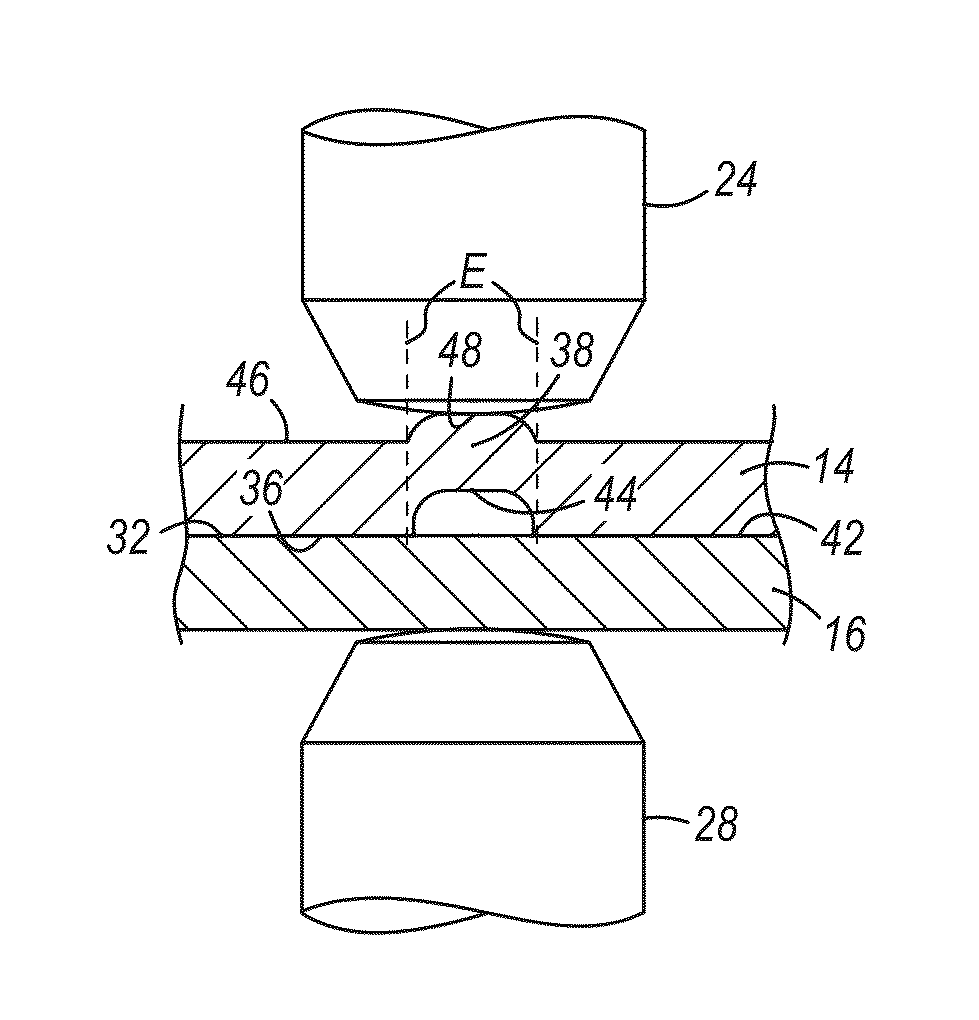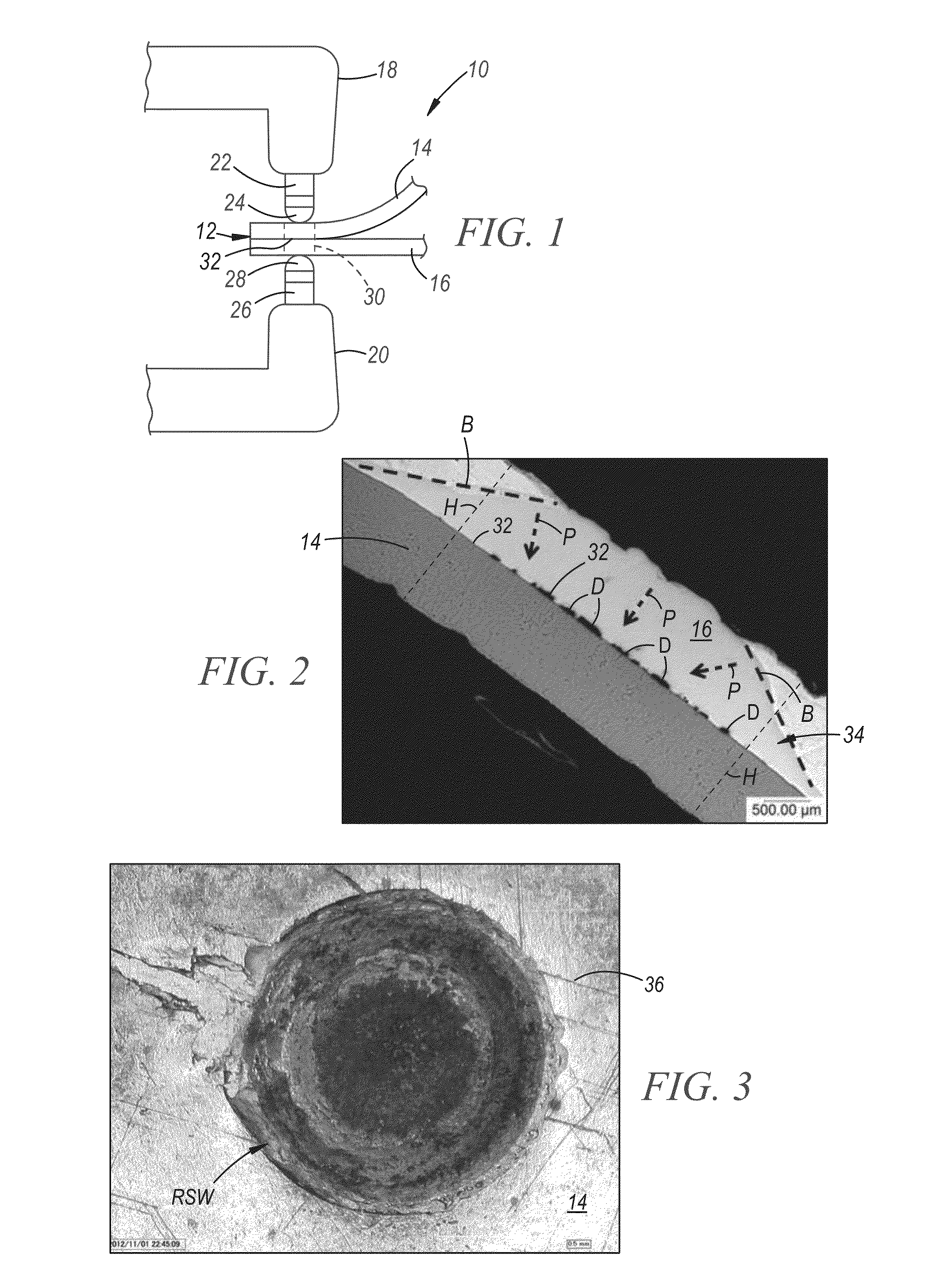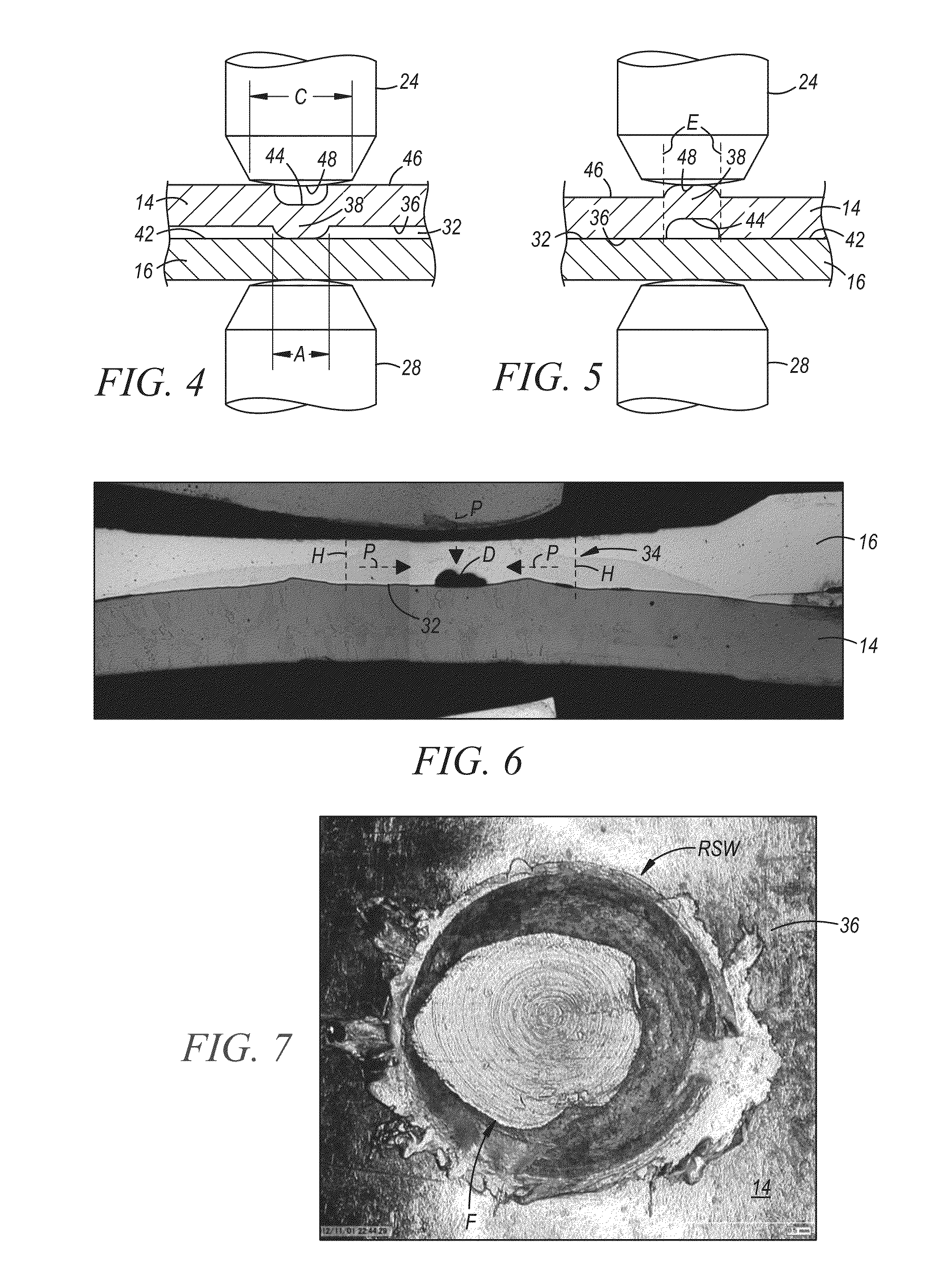Resistance spot welding steel and aluminum workpieces with protuberance
a technology of resistive spot welding and workpieces, which is applied in the direction of welding/soldering/cutting articles, electrode features, manufacturing tools, etc., can solve the problems of difficult structurally sound weld nuggets, metals with considerable dissimilarities, and oxide layers that can disrupt the molten weld pool material , to achieve the effect of reducing the difficulty of welding
- Summary
- Abstract
- Description
- Claims
- Application Information
AI Technical Summary
Benefits of technology
Problems solved by technology
Method used
Image
Examples
Embodiment Construction
[0019]The methods and assemblies detailed in this description resolve several challenges encountered when resistance spot welding is performed on a workpiece stack-up that includes an aluminum workpiece and a steel workpiece. Though described in greater detail below, in general the methods and assemblies described cause penetration through oxide layers present on the aluminum workpiece and thereby help ensure proper wetting between the aluminum and steel workpieces. The methods and assemblies also alter the solidification behavior of a produced weld pool and thereby limit or altogether preclude the dissemination of defects laterally along a faying interface of the workpiece stack-up. Further, the methods and assemblies can minimize the size and thickness of Fe—Al intermetallic layers formed at the faying interface, and can hinder the propagation of micro-cracks at the faying interface. Of course, other improvements are possible and not all of these improvements need be exhibited in ...
PUM
| Property | Measurement | Unit |
|---|---|---|
| diameter | aaaaa | aaaaa |
| thickness | aaaaa | aaaaa |
| thickness | aaaaa | aaaaa |
Abstract
Description
Claims
Application Information
 Login to View More
Login to View More - R&D
- Intellectual Property
- Life Sciences
- Materials
- Tech Scout
- Unparalleled Data Quality
- Higher Quality Content
- 60% Fewer Hallucinations
Browse by: Latest US Patents, China's latest patents, Technical Efficacy Thesaurus, Application Domain, Technology Topic, Popular Technical Reports.
© 2025 PatSnap. All rights reserved.Legal|Privacy policy|Modern Slavery Act Transparency Statement|Sitemap|About US| Contact US: help@patsnap.com



